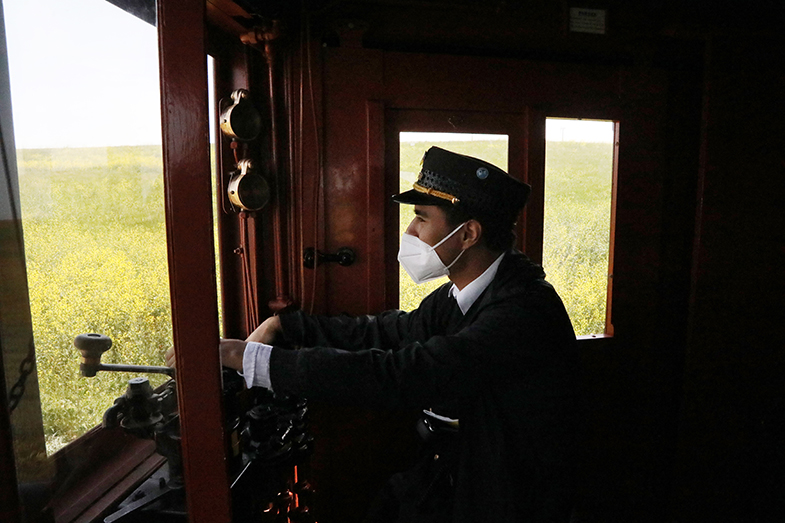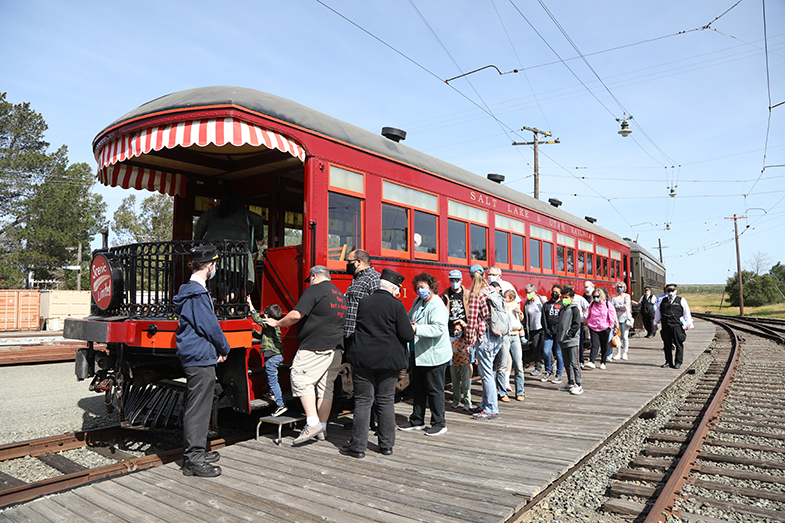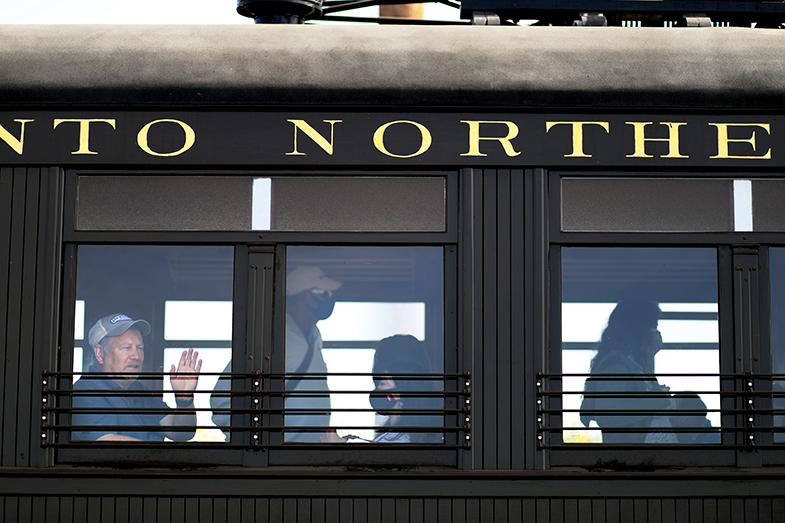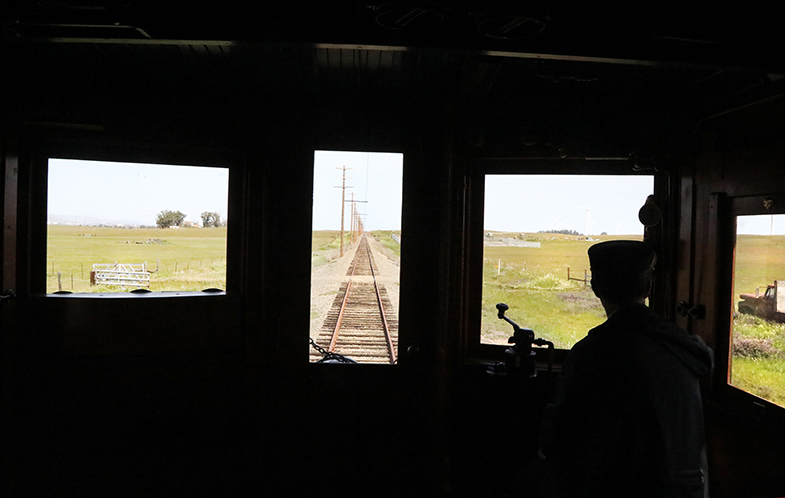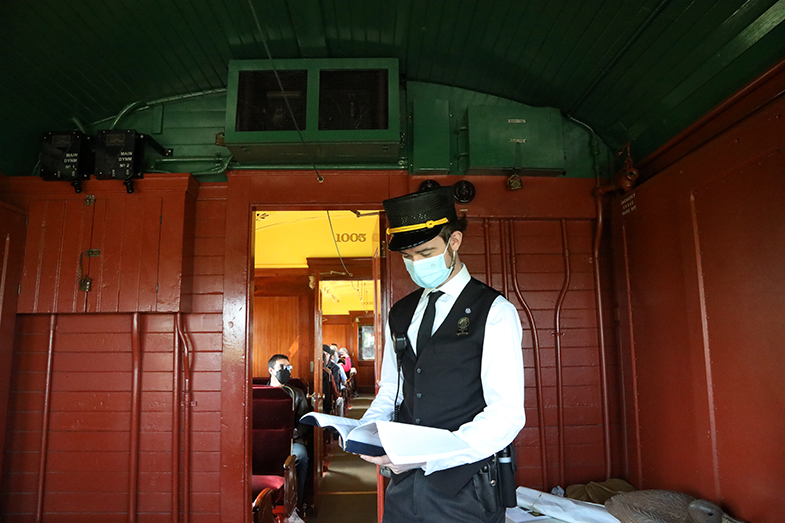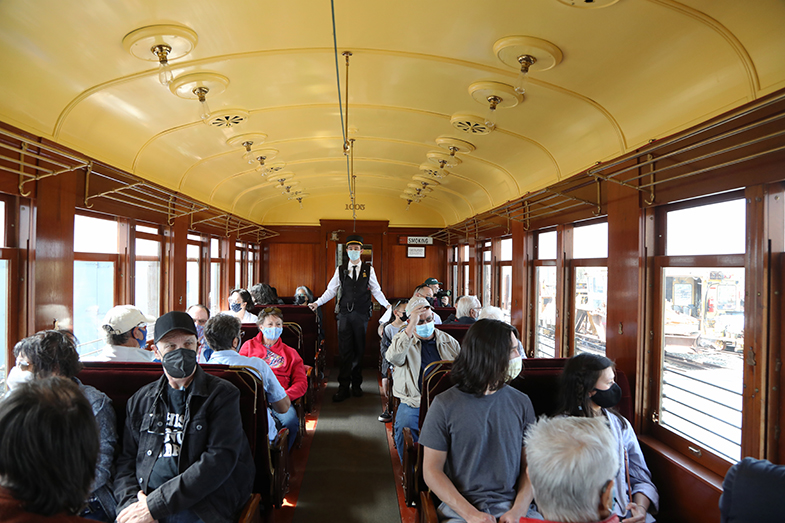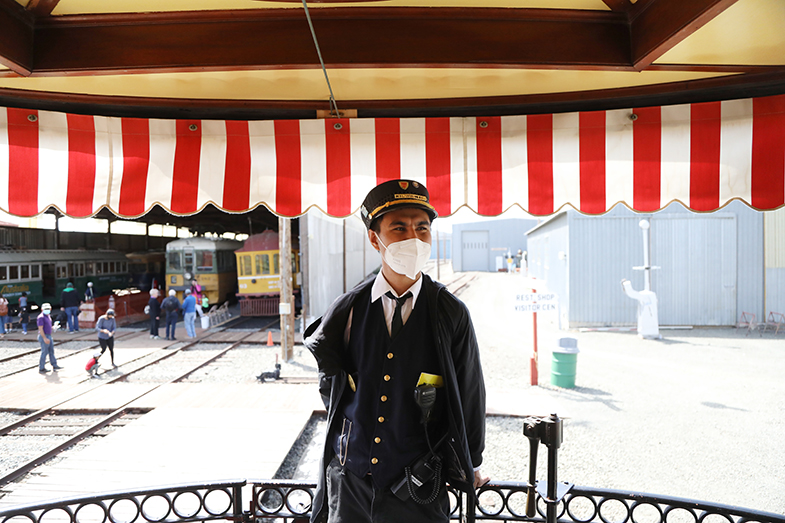Second-generation BART employee works with trains – even on the weekends
On the outer edges of the Bay Area, surrounded by rolling green hills and fierce but slowly gyrating white wind turbines, a series of unassuming car barns set off from a beige main building sit idly.
If you’re lucky, you may see a vibrantly colored train chugging a path along the greenery. And if you’re even luckier, that train may be piloted by Joseph Cliscagne, a second-generation BART employee and all-around train enthusiast.
On a recent Saturday, Joseph ferried about two dozen passengers on a five-mile jaunt around the Western Railway Museum in Suisun City on a bright red San Diego Trolley. Though not the oldest train in the museum’s collection (some of the vehicles were built more than a century ago) the trolley’s covering allowed passengers to enjoy the ride despite a light drizzling of rain.
Since 2016, Joseph has spent nearly every Saturday afternoon at the Western Railway Museum as a volunteer conductor and train operator. Founded and operated by the Bay Area Electric Railroad Association, the museum is dedicated to preserving the history and heritage of electric railway transportation for generations to come. Its stables contain more than a dozen historic trains, from a Central California Traction 19, built in 1910, to a SCCX 662, constructed in 1923 to haul petroleum goods.
The museum plans to add a few additional cars to its stable: a trio of decommissioned legacy BART cars that the transit agency retired to make room for its new Fleet of the Future train. In March, BART announced the eight organizations that will receive legacy cars later this year, with recipients planning to transform the cars into everything from bars and beer gardens to short-term rentals and more.
The Western Railway Museum intends to display its cars in a yet-to-be-constructed Rapid Transit History Center, which will celebrate BART’s historic contributions to the Bay Area and transit at-large. In April, BART General Manager Robert Powers signed a letter expressing BART’s support for the center.
“The museum acquiring a BART train allows us to preserve over 100 years of electric railroading history of trains crossing the bay. First by ferry, then across the bay bridge, and now the tunnel under the bay,” said Eric Mencis, Executive Director of the Western Railway Museum. “The goal of the Rapid Transit History Center is to complete the story of our trains and relate us to the modern world.”
Mencis also stressed the importance of BART having its own section of the museum, separate from the other trains.
“The state-of-the-art technology that was developed as the system started was unlike anything else,” he said of BART. “When looking at the technology of these trains, it is like adding the space shuttle to a collection of model T cars. It is important to tell the story of BART fully, as the Bay Area would not be the place it is today without BART.”
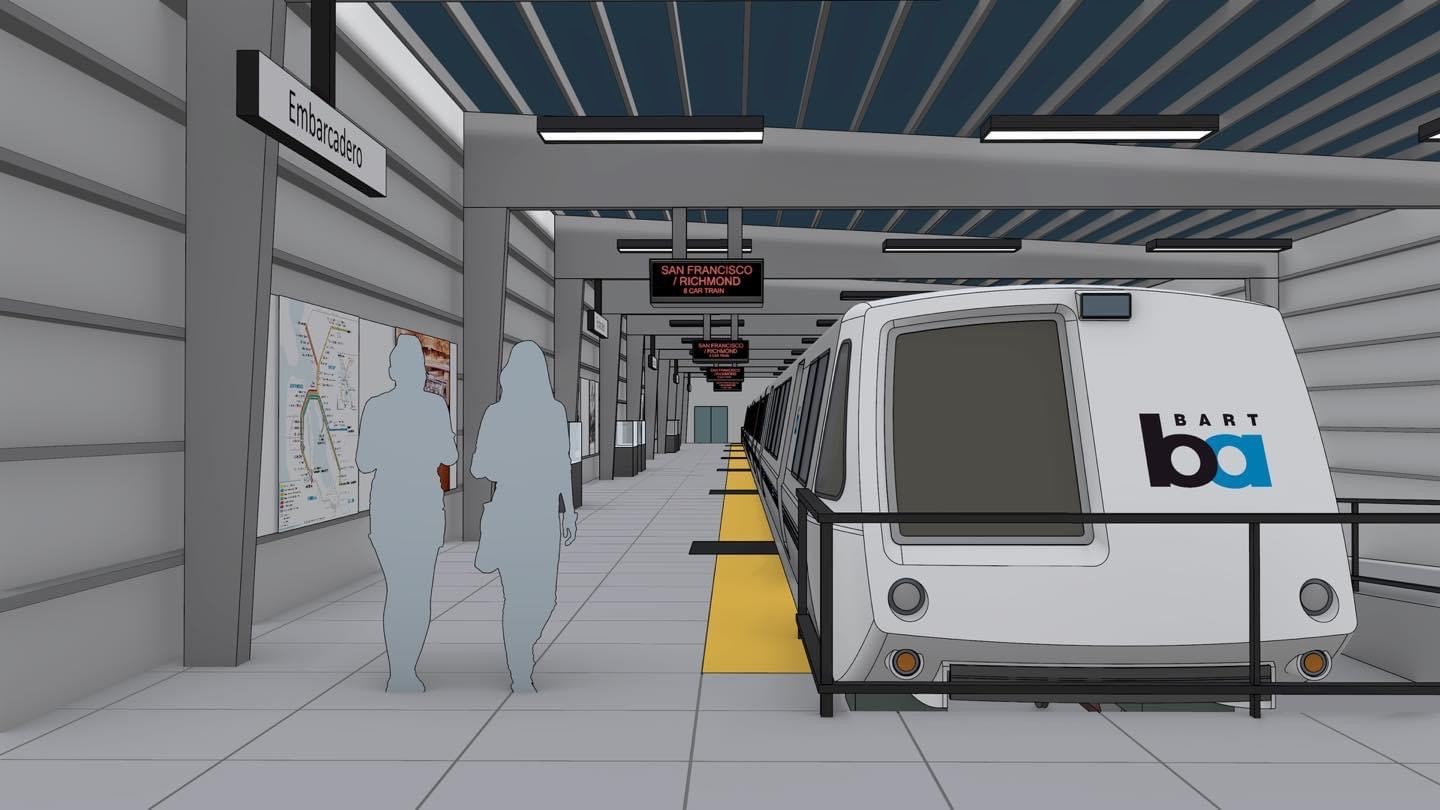
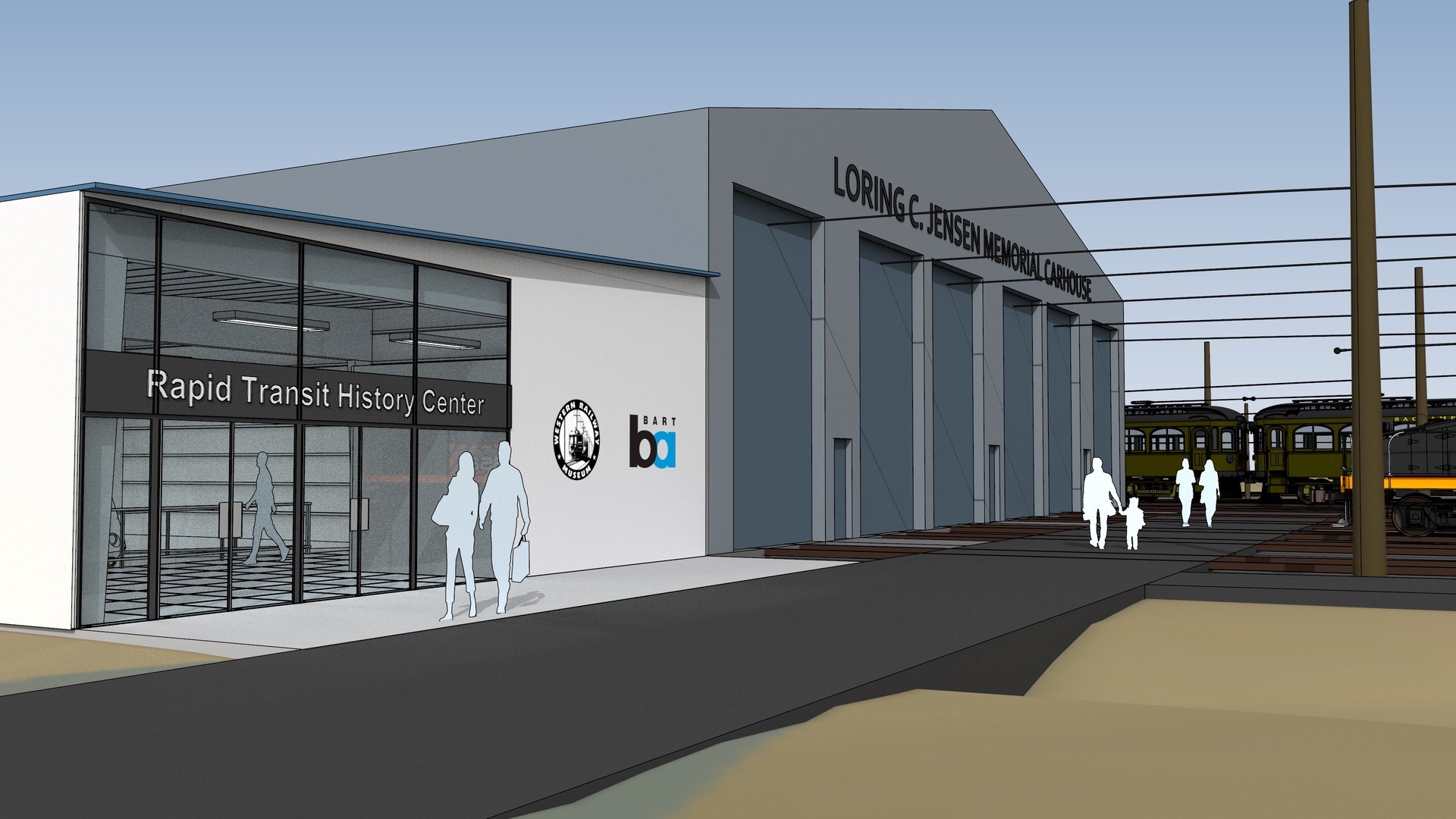
Renderings of the Rapid Transit History Center. Courtesy Western Railway Museum.
When Joseph isn’t at the Western Railway Museum, you can find him still thinking about railroads. Joseph works as an engineer in BART’s Track Engineering Department, the group responsible for the maintenance and upkeep of BART’s 130 miles of track throughout the Bay Area.
“Anything that has to do with rail replacement, my group is doing it,” Joseph said during a break from piloting the San Diego Trolley.
Joseph’s manager, Hok Lai, called Joseph “a railroader who can take a challenging task and become the lead the team can truly depend on.”
“His passion for the railroad makes this a perfect fit for him and BART,” Lai added.
Joseph’s arrival at BART, in 2018, seemed almost too natural. His father, Edward Cliscagne, has worked for BART for more than 20 years as a Communications Electronic Technician.
Edward, a rail fan himself, introduced Joseph to trains at an early age, beginning with a Brio wooden train set purchased before Joseph was born.
“Later, I introduced him to the electric [toy] trains from Lionel that I had,” Edward said. “That was the end of the wooden trains.”
Joseph said he maintains a collection of model trains at home in Antioch.
“I do model trains, too, but not as much since I started playing with life-size ones,” Joseph joked.
Joseph began volunteering at the Western Railway Museum six summers ago. He grew up visiting the museum and riding its collection of vintage cars with his dad, who learned about trains from his father. Joseph said all the museum visits influenced his decision to work for BART, where he started as an intern in 2018. He was soon promoted to Junior Engineer and later Engineer in 2020.
“I figured it’d be fun to use my civil engineering degree and to also be around railroads,” he said of his BART career.
Civil engineers like Joseph work on anything related to infrastructure, from planning and designing to construction and operation. Joseph said he finds the work very “satisfying” because “we’re helping people move around the Bay Area.” Many of the trains at the Western Railway Museum, he pointed out, once operated in the same service area where BART tracks now lie.
Growing up, Joseph said it was sometimes difficult to find like-minded friends that were as interested in railroads as he was. For a rail fan like Joseph, the Western Railway Museum felt like home.
“He later in life became friends with my friend, who was a train lover,” Edward remembered. “They went on many train adventures that he would photograph.”
Edward said Joseph would always record the number of the BART car he rode, in the hopes that he’d one day see the car in the Western Railway Museum. “Then he could say, ‘I rode that car!’” Edward said.
When asked if he’ll be a “BART lifer” like his dad, Joseph smiled coyly.
“I think so. I like being around railroads,” he said, gesturing at the train-filled scenery around him.
In five, ten, even twenty years, Joseph said he’ll still likely be working for BART – and definitely still volunteering at the museum.
“Volunteering gets me out of the house on weekends,” he said. “Otherwise, I’d probably still be in bed.”
